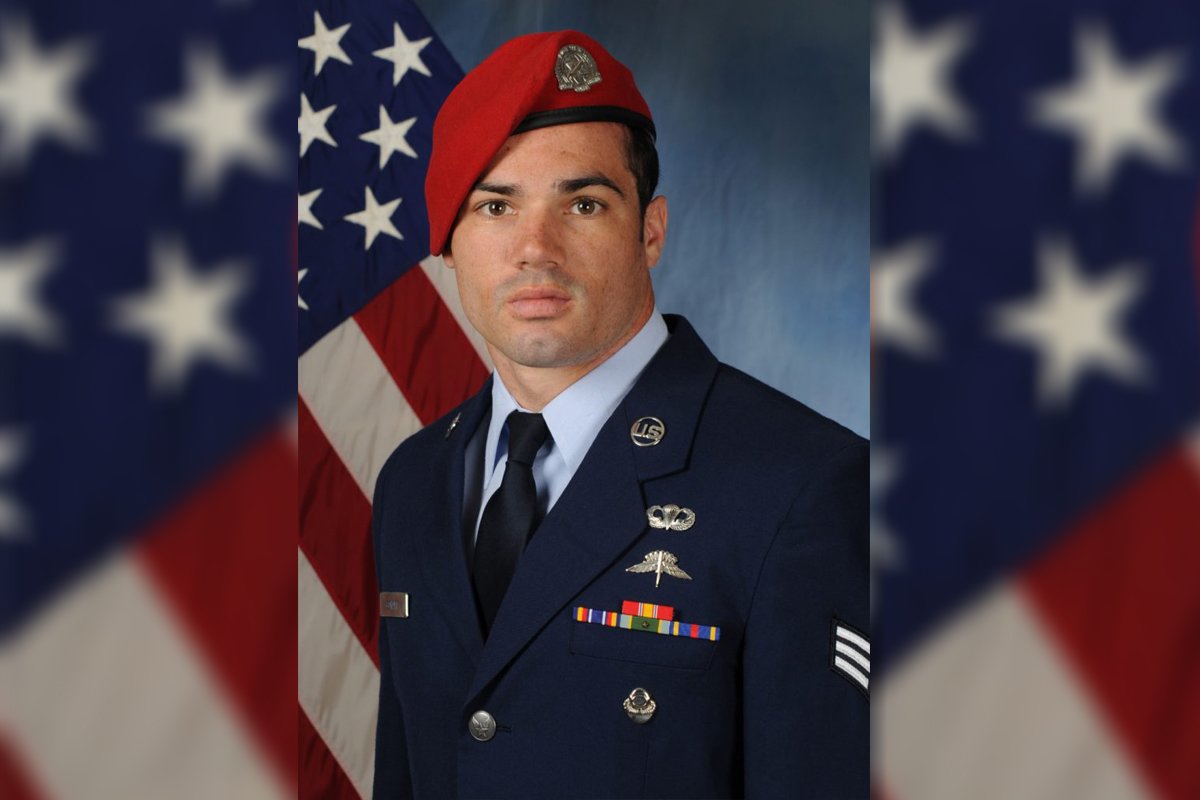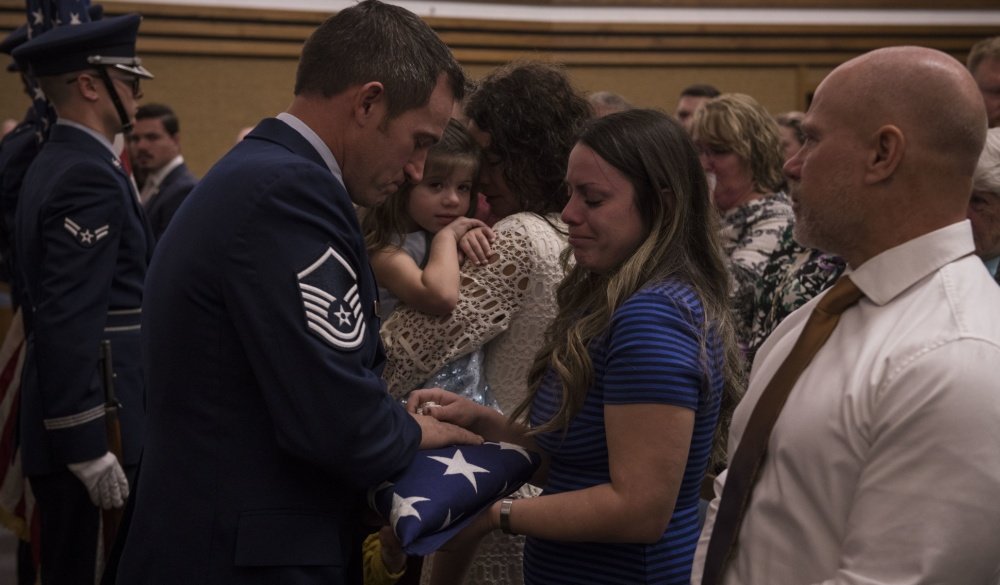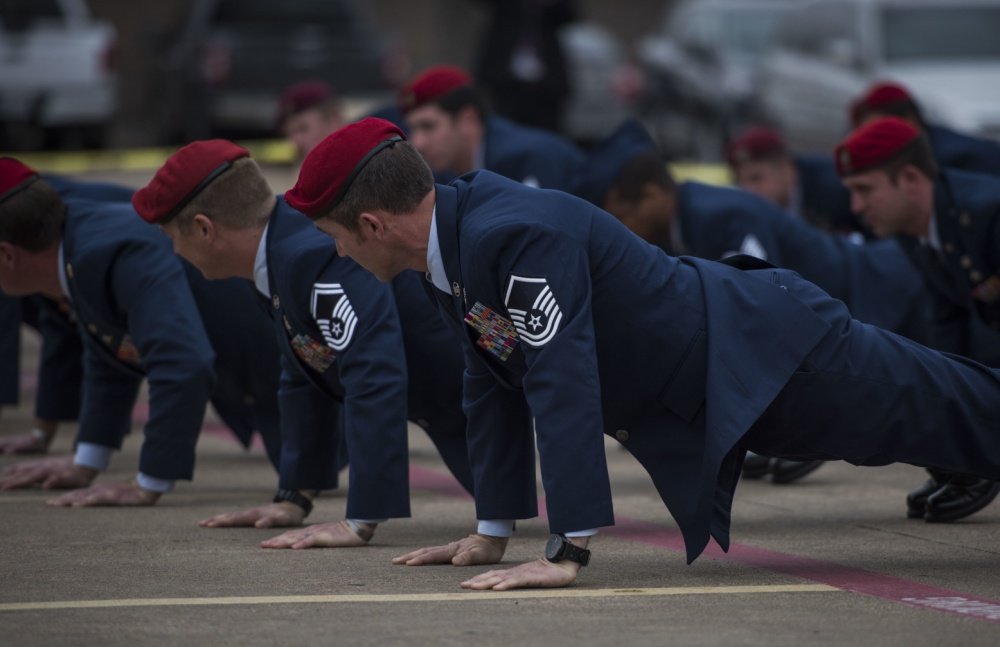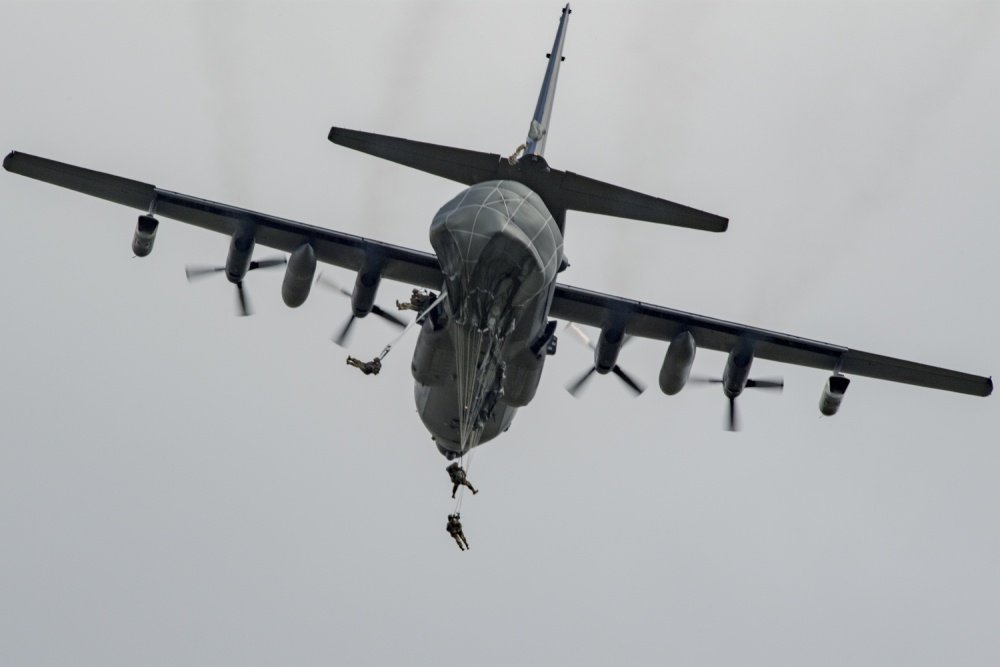Air Force Report Blames ‘Culture of Complacency’ for Combat Controller’s Training Jump Death

U.S. Air Force Staff Sgt. Cole Condiff, Special Tactics combat controller. Photo by Senior Airman Rachel Williams/DVIDS.
On Nov. 5, 2019, U.S. Air Force Staff Sergeant Cole Condiff, 29, a Special Tactics combat controller based at Hurlburt Field in Florida, died during a static line training jump when his reserve parachute inadvertently deployed as he leaned out an aircraft door to survey a drop zone.
In a mishap report released this week by Air Force Special Operations Command, the accident’s cause was determined to be an “improperly configured” reserve parachute, which the MC-130H Combat Talon II aircraft’s slipstream pulled open. Condiff’s main parachute also successfully deployed, and he descended to the Gulf of Mexico under two fully inflated canopies. However, according to the report, Condiff had suffered fatal injuries while being pulled out of the aircraft. Despite an exhaustive 17-day search, his body was never found.
The accident report said Condiff had failed to properly attach several tuck tabs on his reserve parachute, leaving it vulnerable to catching the windblast of the aircraft’s slipstream. In its findings, the report also cited improper training and faulty leadership as contributing factors to the accident. Specifically, there was “a culture of complacency regarding risk acceptance and a reduced emphasis on training standards.”
Even though the intended drop zone was over land, the flight went over water and the jumpers on board should have been wearing life vests — which they were not — the report added.

Condiff, who was a jumpmaster, belonged to the Air Force’s 23rd Special Tactics Squadron (STS), which falls within the 24th Special Operations Wing at Hurlburt Field. A native of Dallas, Texas, Condiff was married and the father of two daughters.
“Cole was a man with deep-rooted beliefs who dedicated himself to God, our freedoms, peace and his family,” said U.S. Air Force Lieutenant Colonel Steven Cooper, commander of the 23rd STS, in a release at the time of the accident. “He was a devoted family man within our squadron, focused on teaching his girls to be adventurous like he was.”
Condiff enlisted in the Air Force in 2012 and immediately entered the two-year combat controller training pipeline. He deployed to both Africa and Afghanistan and logged 106 combined military free fall and static-line jumps during his Air Force career.
Combat controllers are elite, special operations airmen, trained to provide ground-to-air communications on the battlefield, as well as directing airstrikes from ground level. Like other special operations career fields, combat controllers’ training resumes are eclectic, preparing them for a wide range of battlefield environments. For his part, Condiff was a static-line jumpmaster, military free fall jumper, combat scuba diver, air traffic controller, and a joint terminal attack controller.

“The Special Tactics (ST) community is required to maintain training currency in an extraordinary breadth of skillsets,” the accident report found, adding that the unit’s “organizational infrastructure on the date of the mishap did not effectively meet the demand, and the culture did not emphasize the importance or function of training and [standardization and evaluation] programs.”
The MC-130H Combat Talon II aircraft was flying at an airspeed of roughly 150 miles per hour when, according to the accident report, the slipstream caught improperly affixed tuck tabs on Condiff’s reserve parachute, pulling it open. The deployed reserve parachute caught the windblast and yanked Condiff out of the aircraft door.
Witnesses inside the aircraft recounted that Condiff impacted the doorframe “violently,” creating a loud noise and denting the metal. His body then twisted around the airframe and his legs swept out and up into the aircraft’s slipstream. Witnesses described a second impact sound as he hit the aircraft’s exterior.
Under two canopies, Condiff descended to the Gulf of Mexico about 2.5 miles off the Florida shore. The MC-130H’s aircrew were able to maintain sight of Condiff after he landed in the water and orbited overhead for an hour and a half as they tried to direct civilian and military boats, helicopters, and other rescue craft onto his location. Yet the aircraft ran low on fuel and had to return to base before the stricken combat controller was found.

Air Force Special Operations Command U-28A aircraft based at Hurlburt Field began a 24-hour-a-day search mission. Scuba divers performed more than 100 dives, and an unmanned underwater vehicle was also used in the ensuing search operation. Despite the exhaustive, 17-day effort, Condiff was never found.
“The preponderance of the evidence indicates [Condiff] impacted the aft doorframe and exterior side of the aircraft, which resulted in fatal injuries,” the report found, adding that the combat controller “landed in the water with two inflated parachutes and fatal bodily injuries. Because of the weight of the [Condiff’s] body and equipment, he submerged within minutes.”
The accident took place during a weeklong training event called a “Rodeo,” which, according to the report was “an esprit de corps-building competition featuring six [Special Tactics] teams.”
The MC-130H is a special operations version of the venerable C-130 Hercules transport aircraft, which has been in service since the Vietnam War era.
The T-11R reserve parachute with which Condiff was equipped is an emergency parachute, typically worn in front over the lower chest and stomach, and is meant to be manually opened by a parachutist if the main canopy malfunctions. When performing a static-line jump, parachutists typically attach a cord onto a fixed point within the airplane. Once the jumper leaves the aircraft, gravity pulls the main parachute open.

BRCC and Bad Moon Print Press team up for an exclusive, limited-edition T-shirt design!
BRCC partners with Team Room Design for an exclusive T-shirt release!
Thirty Seconds Out has partnered with BRCC for an exclusive shirt design invoking the God of Winter.
Lucas O'Hara of Grizzly Forge has teamed up with BRCC for a badass, exclusive Shirt Club T-shirt design featuring his most popular knife and tiomahawk.
Coffee or Die sits down with one of the graphic designers behind Black Rifle Coffee's signature look and vibe.
Biden will award the Medal of Honor to a Vietnam War Army helicopter pilot who risked his life to save a reconnaissance team from almost certain death.
Ever wonder how much Jack Mandaville would f*ck sh*t up if he went back in time? The American Revolution didn't even see him coming.
A nearly 200-year-old West Point time capsule that at first appeared to yield little more than dust contains hidden treasure, the US Military Academy said.












